Polestar 2 (2024) review: an affordable and great-looking EV
With Android Automotive built-in and a stylish design, this electric car is still turning heads

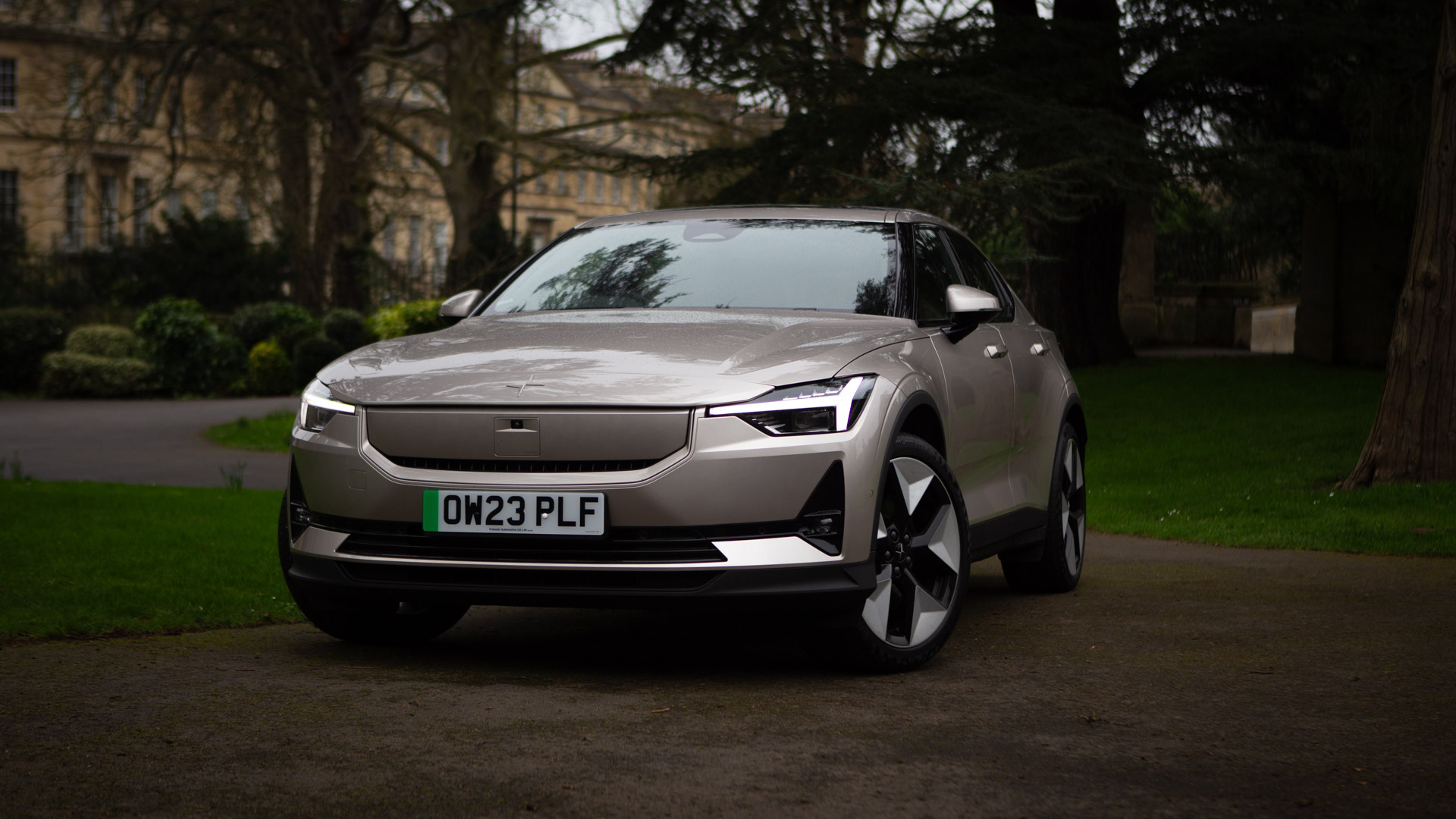
The Polestar 2 paints a bright picture for electric cars, it’s a premium sedan with some serious styling and the benefit of Android Automotive powering the user experience.
-
+
Great looks
-
+
Android Automotive built-in
-
+
Decent range
-
-
The Interior is quite plastic
-
-
Lacks head-up display
-
-
CarPlay needs physical connection
Why you can trust T3

The Polestar 2 is the second electric vehicle from Polestar, the Swedish brand owned Chinese auto giant Geely – which also owns Volvo, Lotus and Zeekr. While the original and now defunct Polestar 1 was a sporty GT, the Polestar 2 is a more affordable four-door sedan with a hatchback. The Polestar 3 and Polestar 4, both SUV models are coming later this year.
There is a certain Volvo feel to the Polestar 2 and it’s easy to draw comparisons the Volvo C40, which is also a four-door EV. However, the price and styling also pit the Polestar 2 up against models like the Tesla Model 3 and BMW i4, though perhaps unfairly.
One of the highlights of the Polestar 2 is it runs Android Automotive natively, allowing you to access all the features of Android Auto without having to connect your phone and also use the Google Assistant and interface to control a range of vehicle functions. You can read my full Android Automotive review based on this Polestar 2.
I first reviewed the Polestar 2 back in 2021, so I was keen to try the updated model. So, this time I drove the 2024 long-range single motor edition with Plus pack to see if the car still stands up to my original review.
How much is the Polestar 2?
The Polestar 2 first launched in summer 2020 with a single offering. The latest 2024 edition comes in four main versions, with the standard range single motor edition starting from £44,950 / $49,900 (long range only), going up to £57,950 / $63,000 for the long range dual motor with Performance pack.
Range figures have now increased on all models, with numbers ranging from 352 miles on the dual motor performance model, up to 406 miles on the long range single motor edition (320 miles based on US EPA figures).
While the single motor models produce a reasonable 272hp to 299hp, the dual motor models deliver up to 476hp and a 0-60mph of as little as 4 seconds from the performance pack edition.
Get all the latest news, reviews, deals and buying guides on gorgeous tech, home and active products from the T3 experts
I reviewed the long range single motor edition, with Plus pack and the upgraded 20-inch 5-v spoke allows, priced at £54,750 / $52,700.
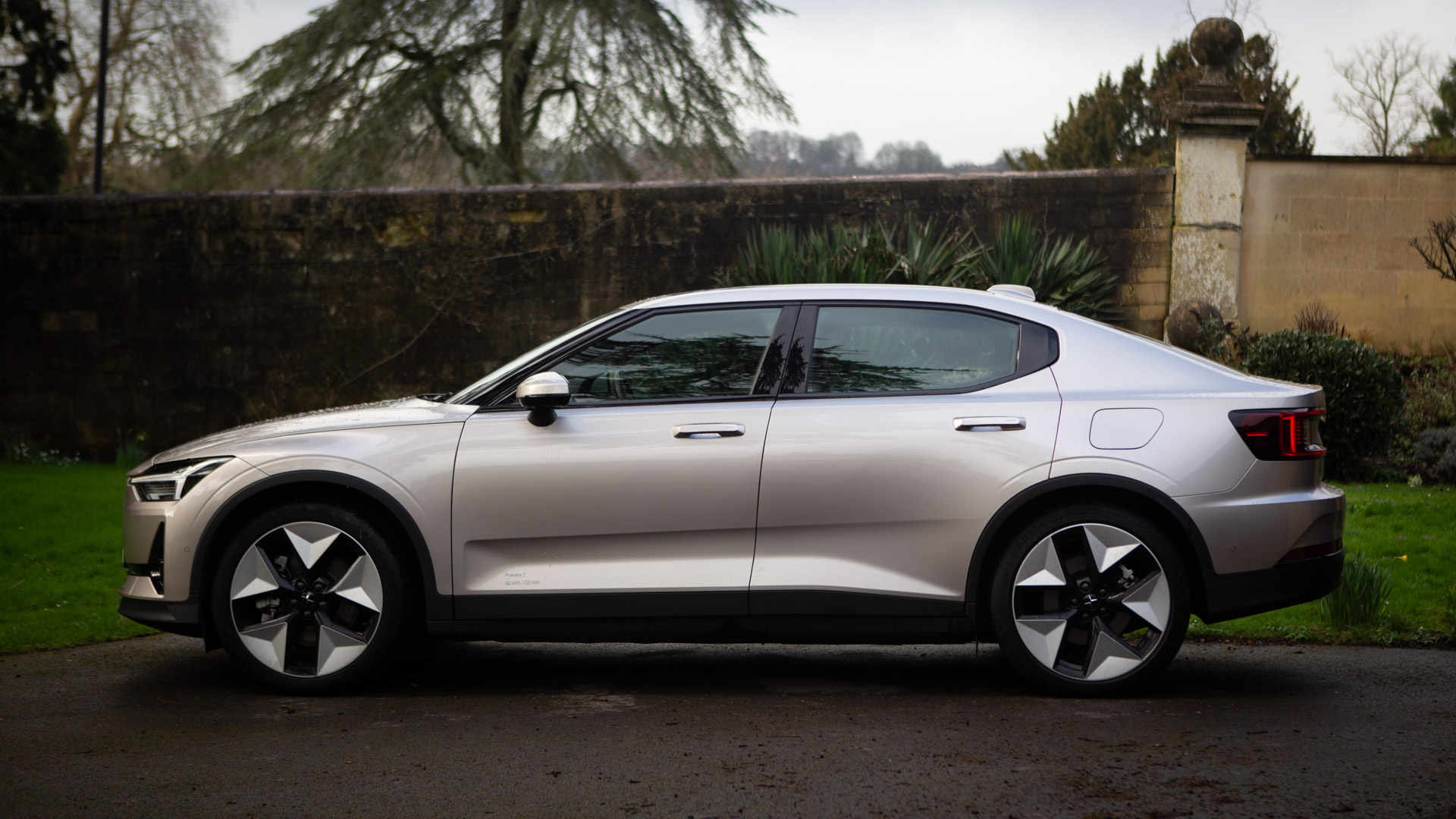
How does the Polestar 2 look?
The exterior of the Polestar 2 looks modern without being radically different. While on a profile view, you could certainly mistake it for a range of other saloon models, the front and rear provide character.
The large, black front grill provides a stark contrast to the surrounding paintwork, especially on the lighter paint colours. The model I tested came in a goldish tone listed as Jupiter, but it is also available in Magnesium (silver), Snow (white), Thunder (grey), Midnight (dark blue) and Space (black).
The front lights a long and thin, as if the car is giving you an intense stare. When I first tested this car, it was often matched by passers-by as they tried to work out what the car was. Some even resorted to asking when the car was parked, as the star-like badge doesn’t give much away. Now though, they are a more common site on British and American roads.
The rear has a long LED strip that joins the left and right rear lights to create a shape much like an upside-down staple. Again, this was once pretty distinctive, but today quite a few – particularly electric vehicles – provide a similar continuous rear light.
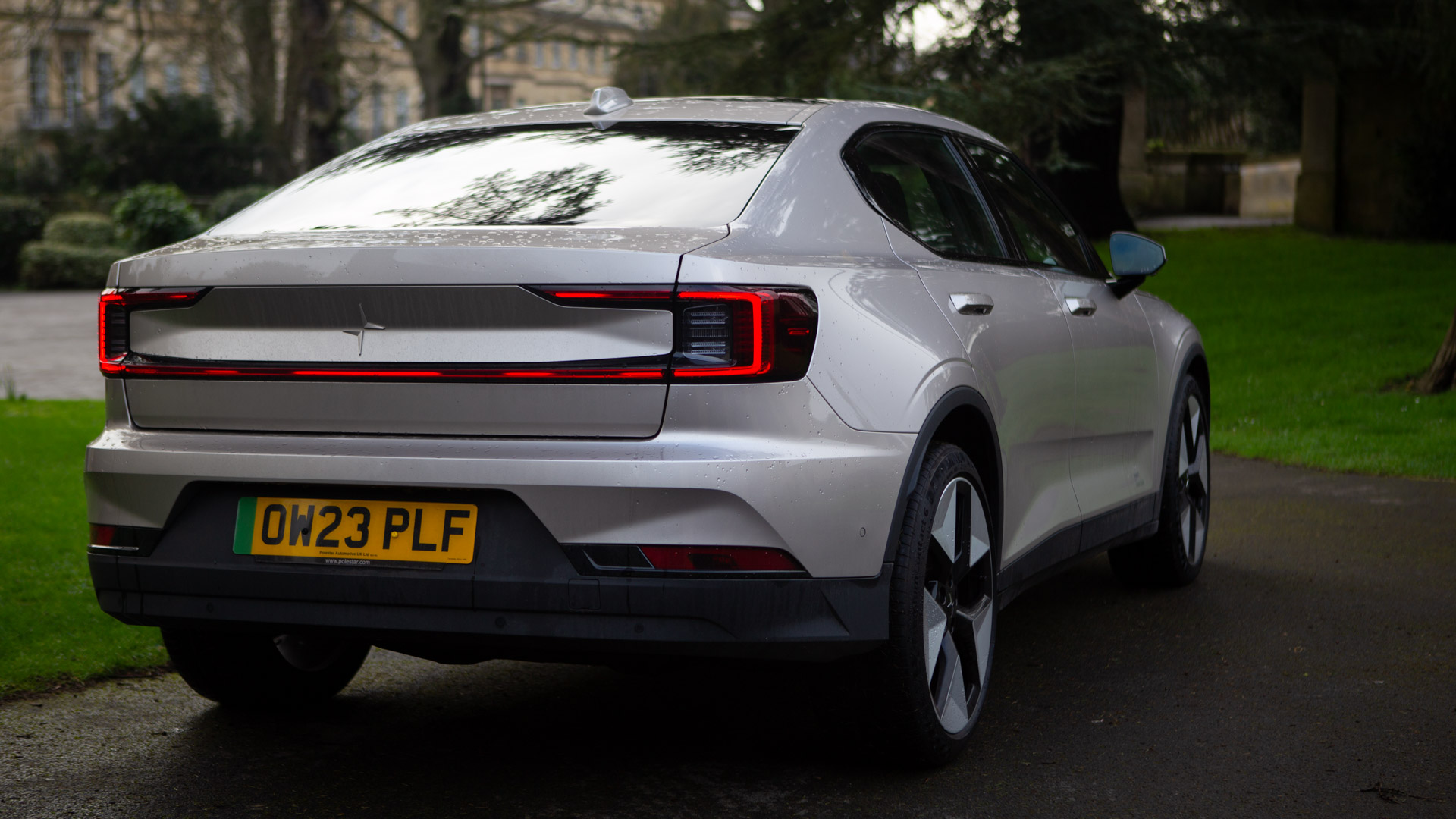
Inside the Polestar 2
The interior is where the Polestar 2 stands out. The design is fairly minimalist for a regular sedan – though not to Tesla levels. There is still the normal array of vents and controls here, as well as an instrument panel behind the steering wheel but it feels spacious and uncluttered.
The focal point of the design is the 11-inch display that appears to float in the centre console. This can make the screen feel out of place and somewhat stuck on, rather than part of the car design. Though this is still a common issue for large-screen cars I do prefer the more integrated designs like Mercedes’ Hyperscreen.
The second screen behind the steering wheel provides the driving dynamics but also the navigation from Google Maps. If you switch to CarPlay you get a more basic display. It’s a shame there’s no head-up display option on the Polestar 2, as this is becoming a much nicer way to have the info displayed.
The shift lever has a diamond-shaped design and offers a subtle movement. The parking brake is a button next to the lever and is all you need to press before leaving the car. There are also buttons on the steering wheel that although are a familiar gloss plastic, require a proper press rather than a light touch, which makes them feel nicer to use.
Probably one of the most divisive parts of the Polestar 2 is the sound of the indicator. When pressed, the ticking sounds like someone tapping on plastic, which you will either love or hate.
The fabrics used here offer vegan options as well as constructed wood and claim a 35% reduction in plastic. However, it does still feel like there’s a lot of plastic here – particularly surrounding the centre console, which doesn’t feel as premium as it looks.
Helping with that airy feel to the interior is a panoramic glass roof that comes as part of the Plus Pack (for an additional £4000 / $2,200). The glass roof is tinted to avoid glare but it opens the car up, especially on sunnier days. The only view that is slightly restricted is through the rear, as the view through the rear window is quite thin.
The Tech
The Polestar 2 has Android Automotive built-in. This not only provides the entertainment but also provides the controls for the vehicle’s driving assistance, climate, cameras and charging. Many new cars offer the use of CarPlay or Android Auto through a connected phone, but they still require a proprietary operating system to run the rest of the functions.
With Android Automotive, the Polestar 2 becomes one big Android system, operated by a very Android-looking tablet. This is a much more integrated system that offers a more natural user interface. However, the OS is a bit limited in functions and has a reduced number of apps available for use compared to that mirrored from Android phones. Recent proprietary systems, like the BMW and Mercedes systems, feel slicker and more modern.
If you want to still use Apple CarPlay from your phone, you can, but your phone has to be physically connected via a USB cable. It seems a shame that there isn’t the option to connect CarPlay wirelessly, though unless you are intent on using Apple Maps over a frankly superior integrated version of Google Maps, there’s not much benefit to it over a Bluetooth connection for phone calls.
You do get the option of the Harman Kardon premium sound system, which comes with the Plus pack. This includes 13 speakers and 600W of power. It’s not as crisp as some really high-end systems but there’s plenty of bass and a good amount of volume from it.
By downloading the Polestar app, you can connect your phone to the vehicle to act as a digital key, as well as to remotely activate the climate control and view the charge status. This also allows you to activate driver profiles, setting everything from the mirrors and seat position to the entertainment. Each driver can have their own profile and on recognizing the approaching digital key for that person, the car will revert to their presets.
There are four cameras on the outside of the Polestar 2, and these can all be accessed from the centre display. These are principally used as a parking aid and can form a 360-degree view of the car (now as standard). What you see on the screen is a bird’s eye view of the vehicle, allowing you to easily line up the vehicle for parking. This view also activates when driving through narrow gaps. Unfortunately, there is no automatic parking option though.
The Pilot Pack upgrade (£2000 / $2000) includes automatic rear braking, adaptive cruise control, pilot assist (also known as lane assist) and LED front fog lights that can adjust their angle when cornering.
The standard wheels are 19-inch five-spoke alloys, and have a really interesting design that elevates the car. However, you can also upgrade to the 20-inch 5-V spoke alloys or choose the Performance pack model, which includes special 20-inch 4-multi spoke alloys as well as special edition gold-coloured seat belts, Brembo brakes and DFV dampers.
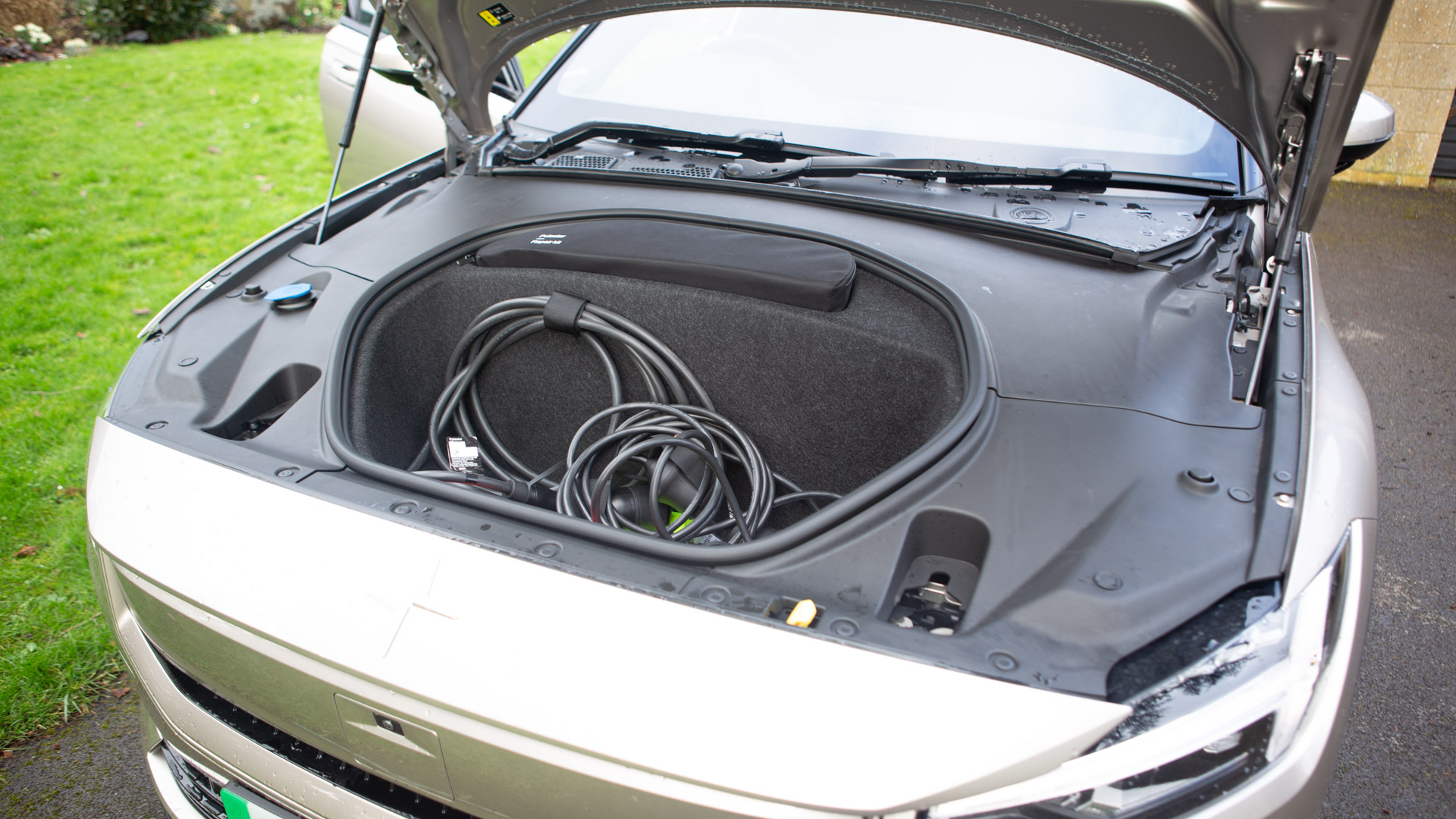
The Polestar 2's trunk houses the charging leads
How does the Polestar 2 drive?
For charging, the Polestar 2 now offers up to 205kW charging for its long range versions (135kW for standard), which takes a 10-80% charge down to just 28 minutes at full power. Both models also provide up to 11kW AC charging for home use, which means a full charge in as little as seven hours if you have a 3-phase connection.
In practice I found the Polestar 2 much faster to charge than I remembered from the first test, and that even on a mixture of fast chargers I was spending less time charging than I’d experienced with some of its competitors.
There’s no actual start button on the Polestar 2, which still unnerves me a little. The car is always on standby and comes to life when you get in, then turns off when you get out and lock the doors. Some functions, such as the cameras won’t activate until you put the car in gear. It’s something you quickly get used to though.
One of my favourite driving options on the Polestar 2 is one-pedal driving. This provides breaking as soon as you release the accelerator, meaning that you rarely have to use the actual brake, apart from more urgent stops. This takes some getting used to, especially on occasions where you would normally let the car coast – and instead come to a stop. But it really helps for busy city driving, or when sat in traffic.
The adaptive drive control and Pilot Assist are all linked as part of the cruise control buttons on the steering wheel. You can turn the adaptive and pilot assist parts off and just use regular cruise control if you prefer, but you’ll be missing out by doing so.
Adaptive cruise control is really handy on busier roads, as it will slow you down to the speed of the vehicle in front, and even stop when they do. You do need to re-engage it to start moving again if you have been brought fully to a stop. There’s also a handy distance adjustment on the wheel to change how far you want to stay from the car in front.
Pilot Assist uses the Polestar 2’s cameras and radar to detect lane markings and make small adjustments to the steering to stay within the lanes. I found I needed to keep significant pressure on the steering wheel to avoid getting warnings to put my hands back on the wheel, and would often need to fight against the Pilot assist to prove I was doing so.
The general ride is on the harder side in the Polestar 2 but still very comfortable. The power from the electric motors provides instant response at any speed and the sheer acceleration is really impressive.
The dual motor model I tested the first time around felt rapid and really planted going into and out of corners thanks to the all-wheel drive. This time, however, the single motor version still really impressed, and while not as quick and rear-wheel drive, it is still a big upgrade on most mid-range ICE car saloons.
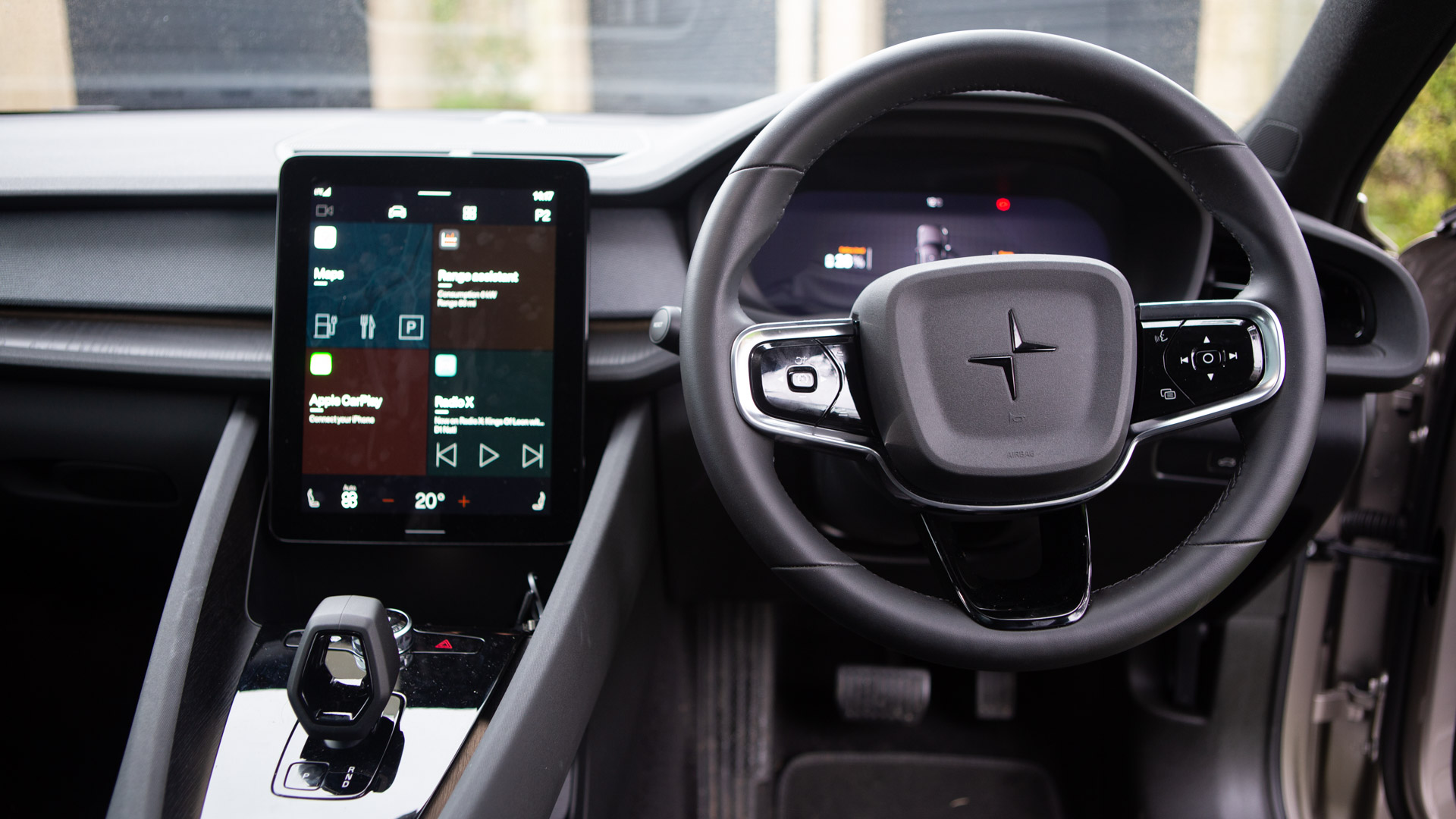
Should I buy a Polestar 2?
The Polestar 2 is an excellent car, not least thanks to the power of the Android Automotive system. What is nice about this car is that, while it has elements of future technology, it still behaves in the main, like a regular car. The look and feel of the Polestar 2 are premium for its price point.
It’s not perfect. The Android user interface is feeling a little old and at odds with the rest of the design. It would have been nice to have a little more on the autonomous driving side. However, this is not an £100k motor, it’s a relatively mid-priced sedan, and so what it does offer is still impressive.
While driving some electric cars can feel strange, the Polestar 2 feels more familiar. It certainly competes well on price with other electric saloons and is certainly a great family option for those who would rather avoid an SUV.
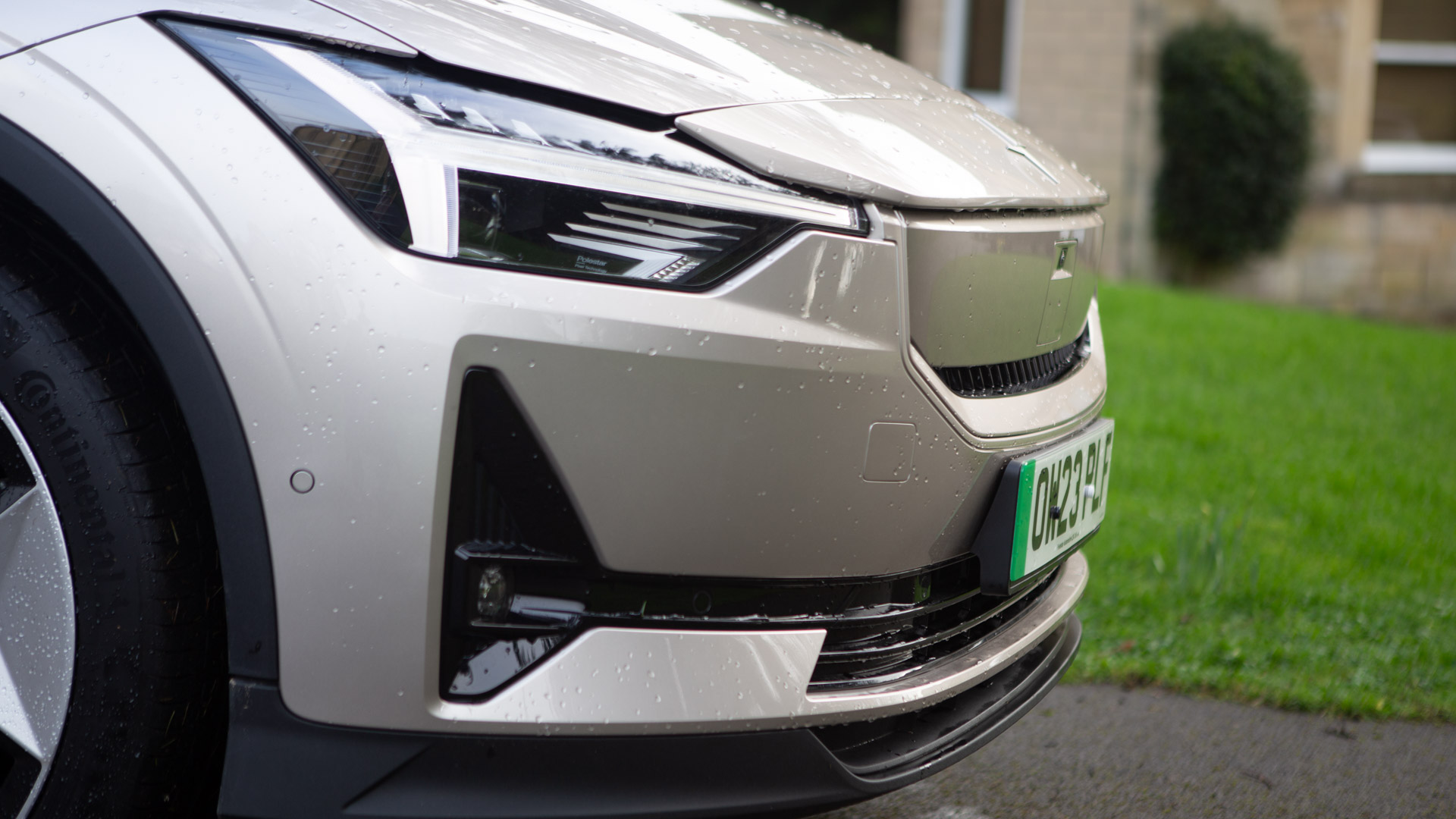
Also consider
Tesla’s Model 3 starts from a slightly cheaper £39,990 / $35,990 for the single motor version and at £49,990 / $44,740 for the long-range dual motor model. Like on the Polestar 2, you do pay extra for all the fancy functionality and if you want full self-driving you will end up paying much more. However, it also benefits from the Tesla charging network and a currently more advanced operating system.
Ford’s Mustang Mach-E will cost you a little more, with prices starting from £43,830 / $39,895, and to get the extended range and dual motor you are looking at over $52k/£58k. However, this is a great-looking car that features the Ford Bluecruise technology for hands-free highway driving and uses Amazon Alexa for its voice assistant.

As T3's Editor-in-Chief, Mat Gallagher has his finger on the pulse for the latest advances in technology. He has written about technology since 2003 and after stints in Beijing, Hong Kong and Chicago is now based in the UK. He’s a true lover of gadgets, but especially anything that involves cameras, Apple, electric cars, musical instruments or travel.